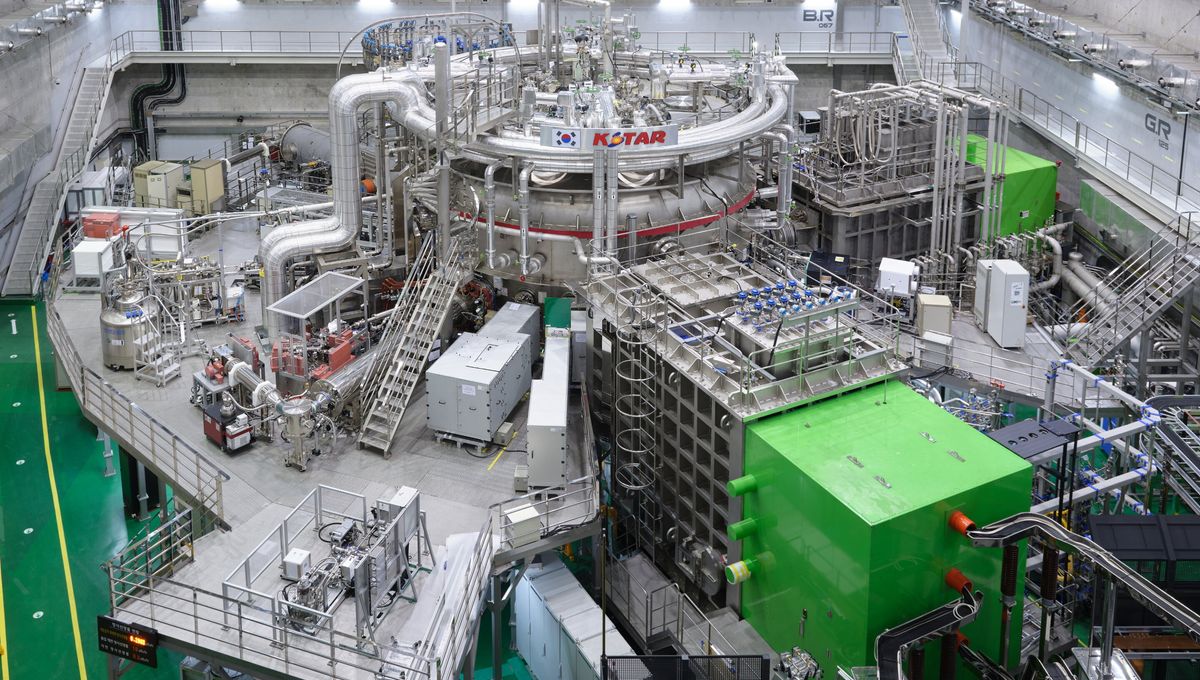
South Korea’s “artificial sun” machine has just been fitted with some equipment that could allow it to generate high-temperature plasma over 100 million degrees Celsius (180 million degrees Fahrenheit) for even longer periods.
The Korea Superconducting Tokamak Advanced Research (KSTAR) is an experimental device located in Daejeon, South Korea. Its job is to provide the unbelievably hot conditions that would be required to perform sustained nuclear fusion, the mighty process that burns within the Sun and other stars.
The KSTAR device “cooks up” these ultra-high temperatures using a tokamak, a large doughnut-shaped reactor that can harness and control plasma – a hot, charged gas made of positive ions and free-moving electrons.
The artificial sun first reached 100 million degrees Celsius in 2018, which it sustained for just 1.5 seconds. In 2019, this was extended to 8 seconds, then a whopping 20 seconds in 2020. Its latest record, achieved in 2022, managed to sustain 100 million degrees Celsius for 30 seconds.
Just recently, the device was fitted with a bunch of new upgrades that could allow it to sustain this mind-blowing temperature for even longer. In sum, the update involved replacing the carbon divertor with one made of tungsten, a material that boasts a high melting point and other desirable qualities.
The experiments using the new tungsten divertor environment are set to continue until February 2024. With the help of this new equipment, the team is now aiming to achieve 300 seconds by the end of 2026.
Nuclear fusion occurs when two light atomic nuclei combine to form a heavier nucleus, releasing a colossal amount of energy in the process. The immense energy could theoretically be captured to produce near-unlimited amounts of electricity.
This is the process that occurs at the heart of the biggest fusion device in our solar system: the Sun. However, unlike the center of stars, the plasma on Earth needs extremely high temperatures to achieve nuclear fusion because it is not being compressed by gravity.
It requires these high temperatures to provide the nuclei with enough energy to overcome their mutual electrical repulsion. The plasma also needs to be contained by strong magnetic fields. As you can no doubt imagine, creating these conditions for sustained periods is no easy feat.
However, that’s not stopping the world’s scientists, who are understandably eager to master nuclear fusion. In France, teams of engineers and scientists are currently putting together the International Thermonuclear Experimental Reactor (ITER), the world’s largest fusion experiment. The latest upgrades at KSTAR will further add to our knowledge about nuclear fusion and will eventually be used in the ITER experiments.
“In KSTAR, we have implemented a divertor with tungsten material which is also the choice made in ITER. We will strive to contribute our best efforts in obtaining the necessary data for ITER through KSTAR experiments,” Dr Suk Jae Yoo, president of the Korea Institute of Fusion Energy, said in a statement.
Source Link: New Upgrade To Korea’s "Artificial Sun" May Lead To Nuclear Fusion Breakthrough